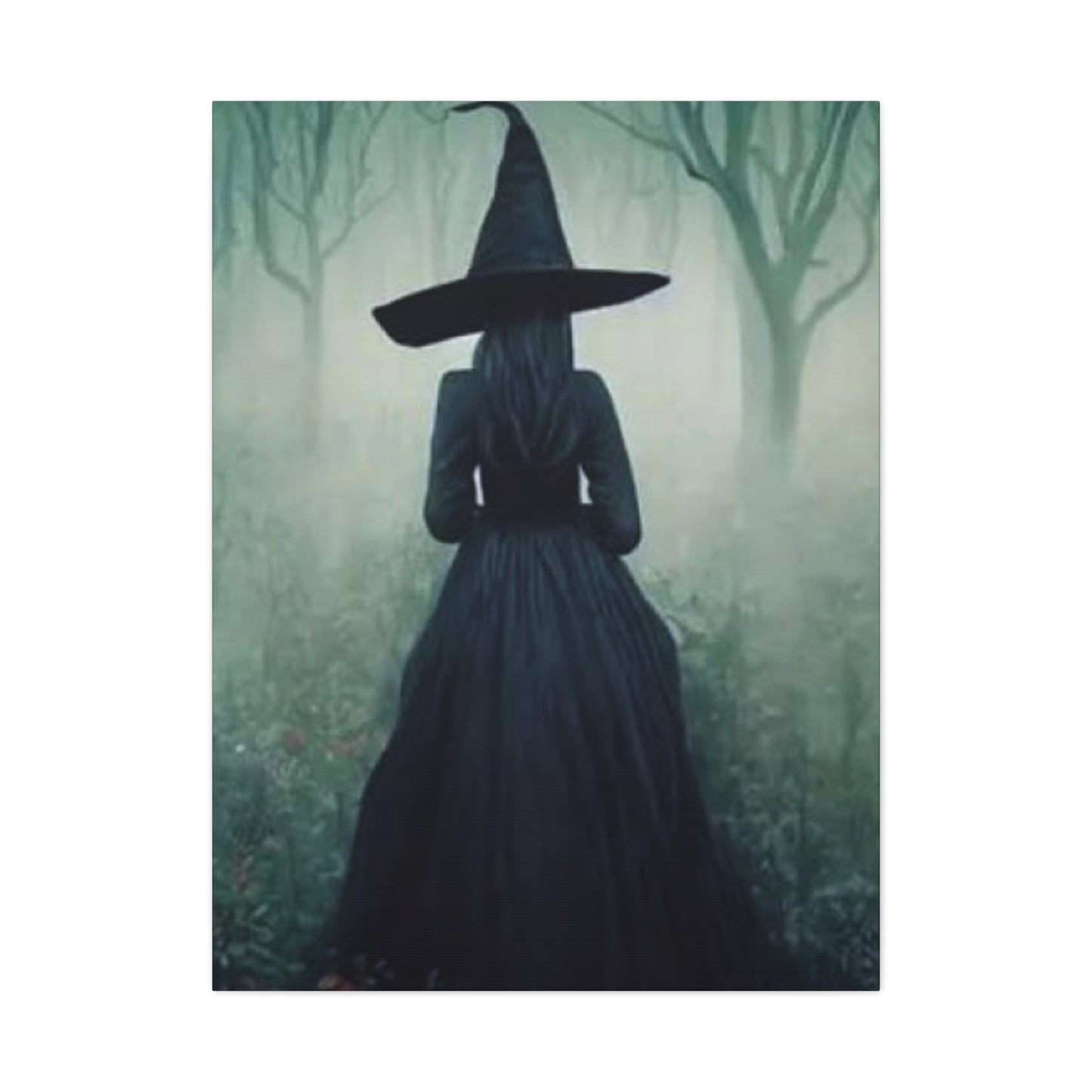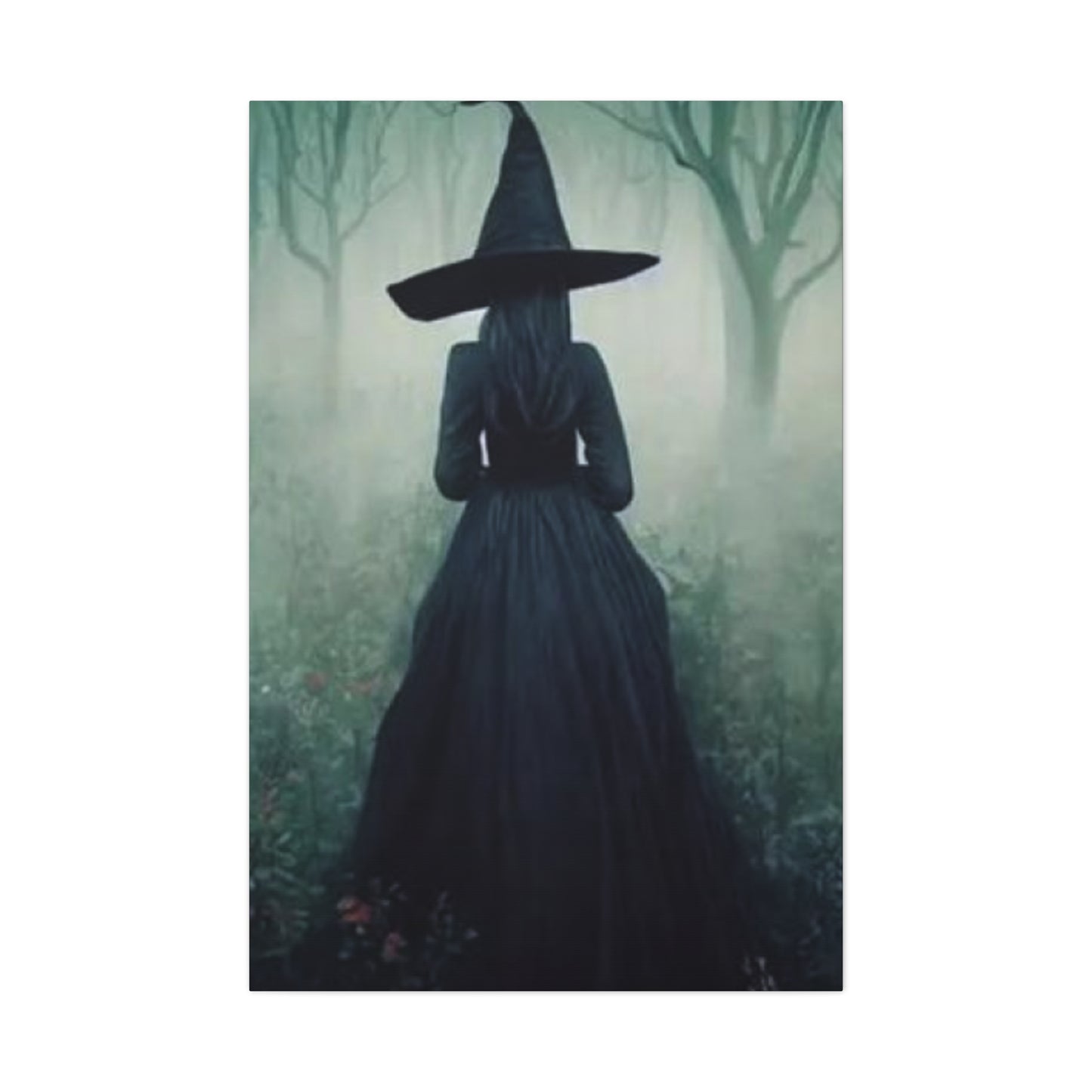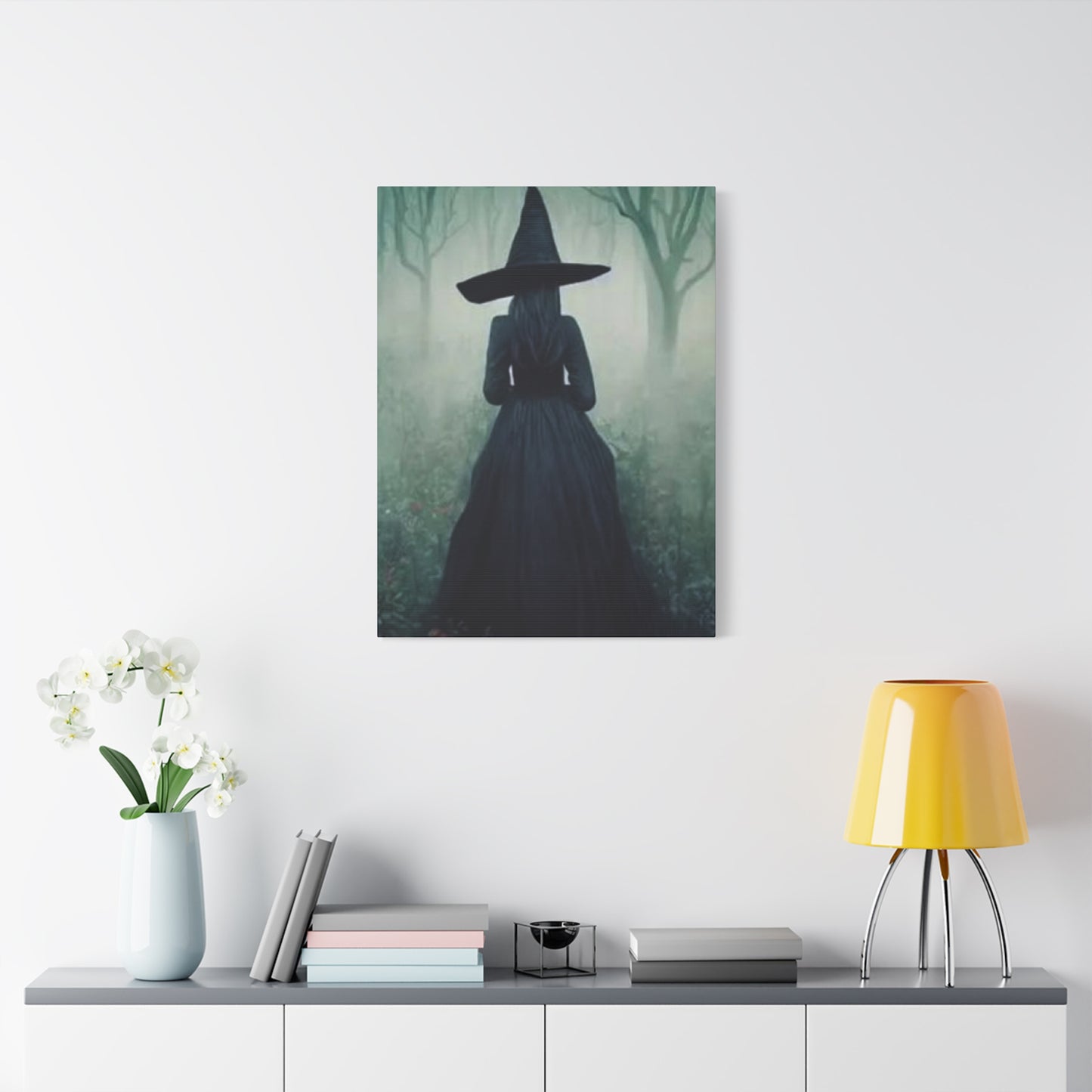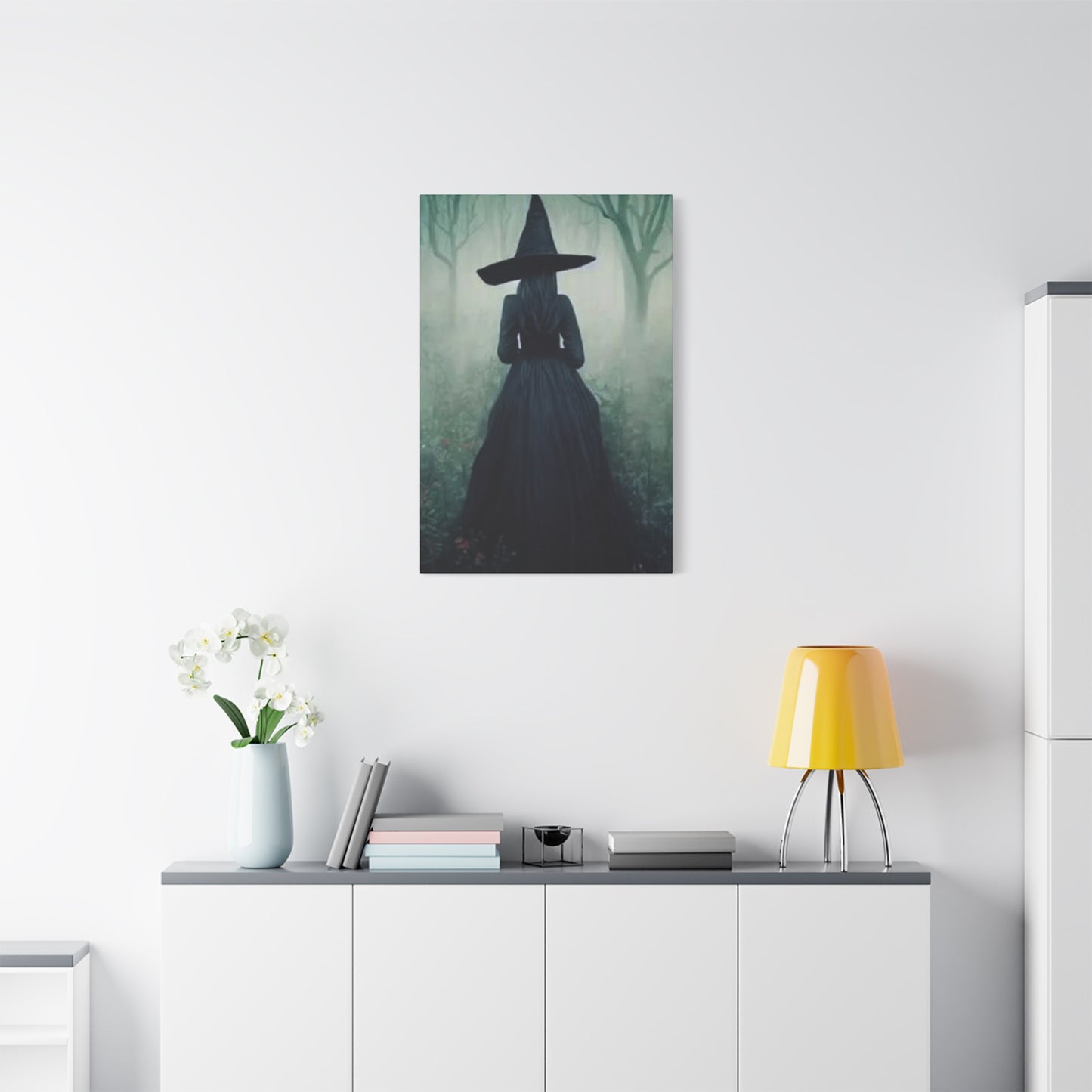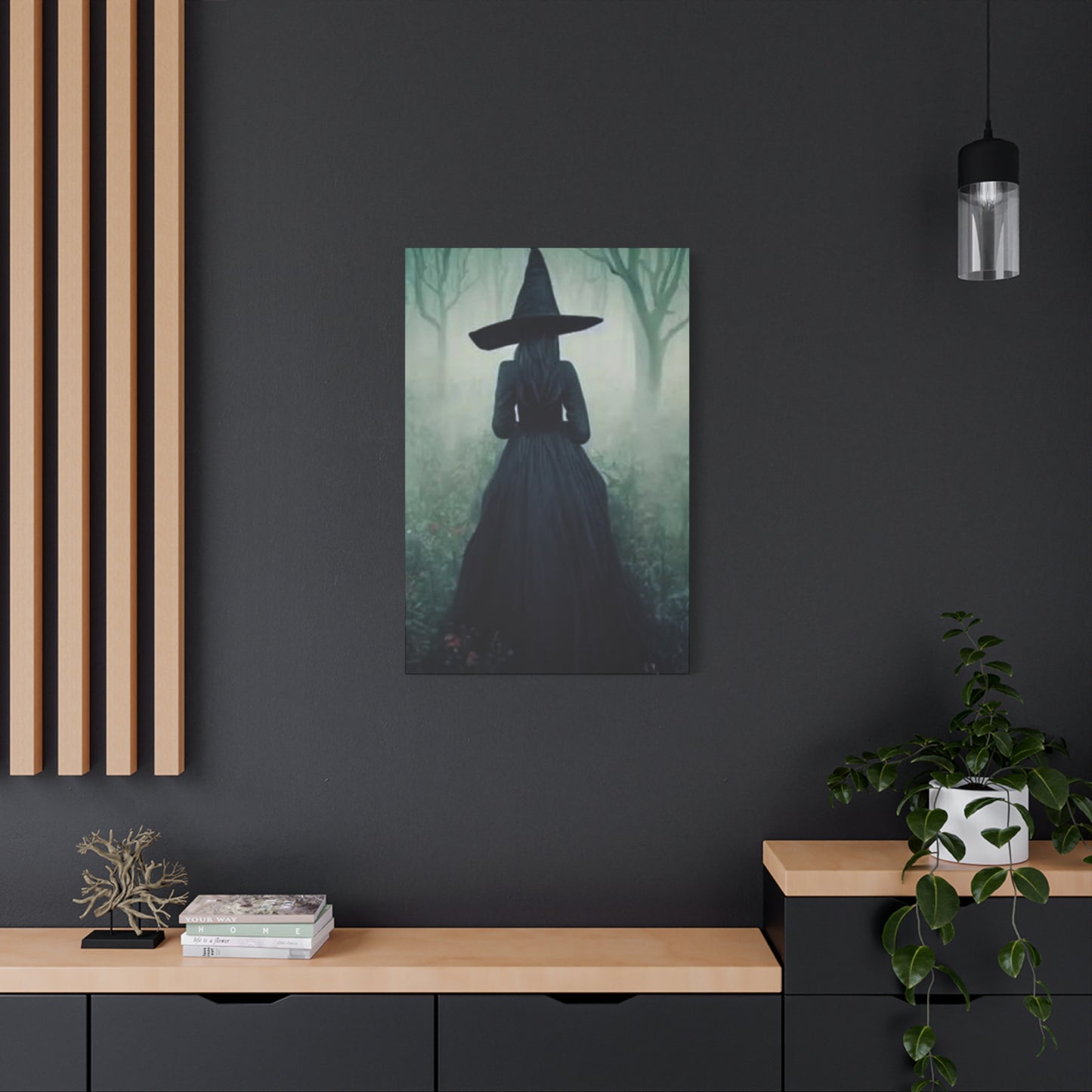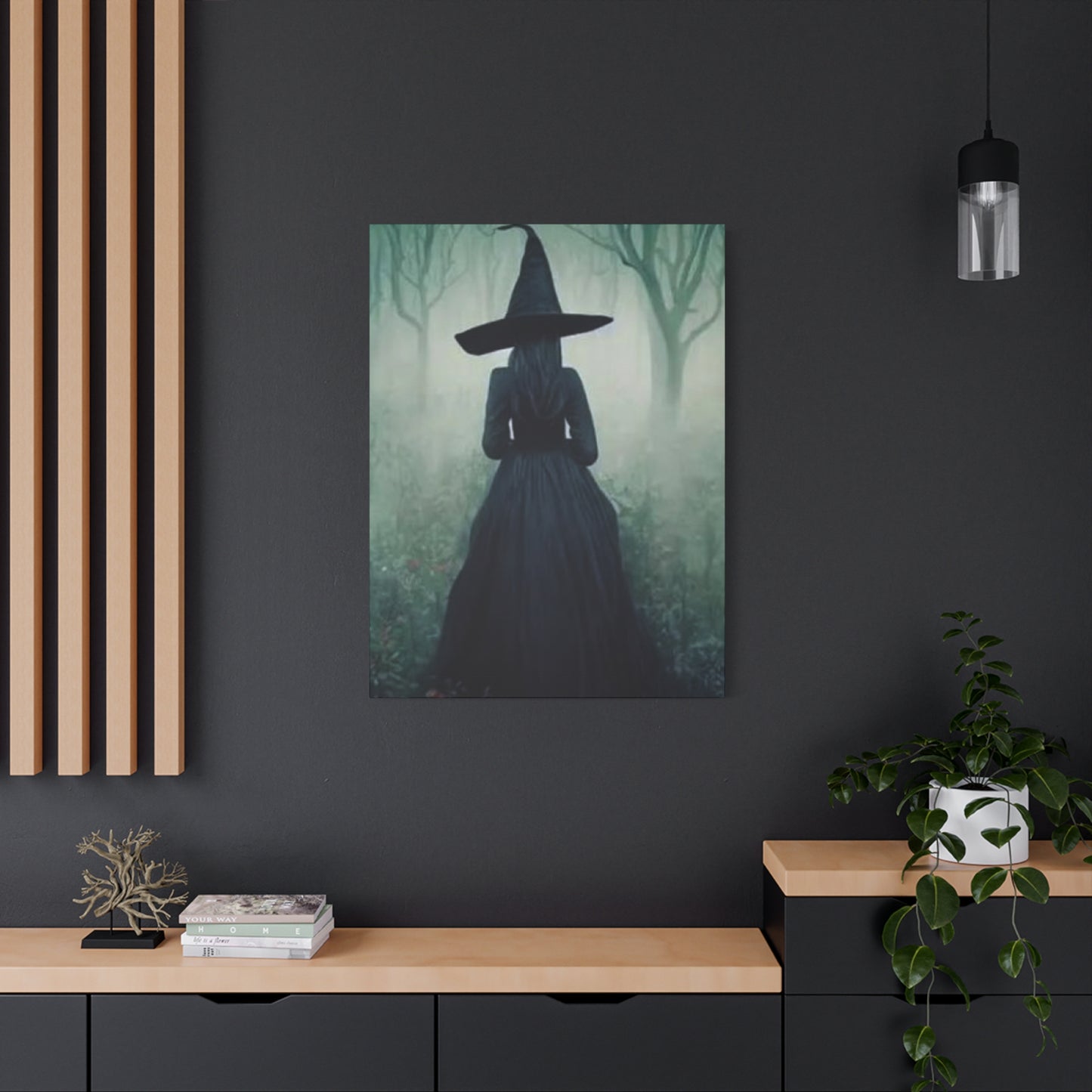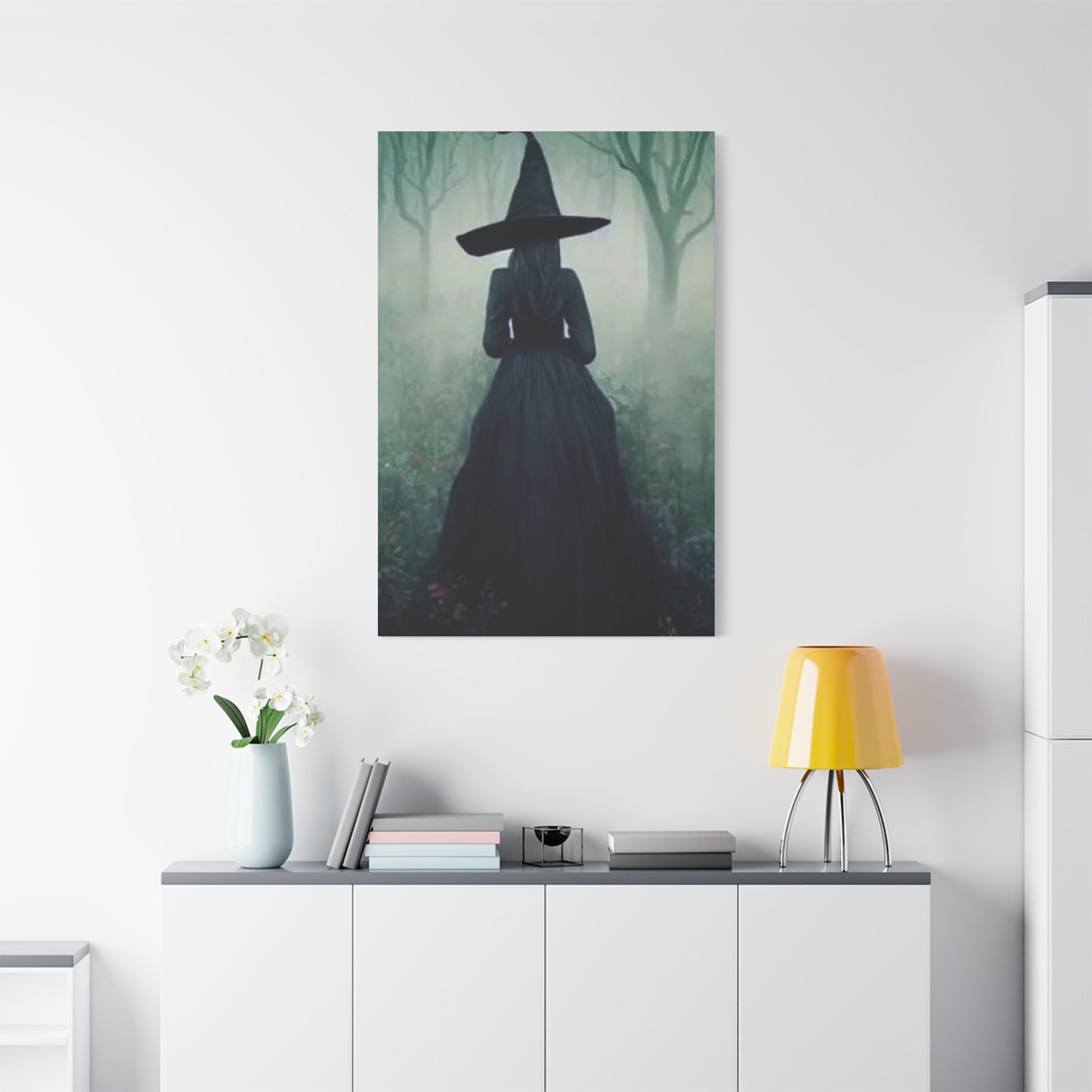Enchanting Witch Painting Wall Art Ideas for Magical Home Transformation
The mystical world of witchcraft has captivated imaginations for centuries, inspiring countless artistic expressions that bring enchantment and mystery into our living areas. Witch wall art serves as a powerful medium to transform ordinary rooms into magical sanctuaries, whether you're preparing for Halloween festivities or simply embracing the year-round appeal of mystical aesthetics. From gothic masterpieces to whimsical children's decorations, these artistic elements create atmospheric environments that celebrate the fascinating lore surrounding witches, magic, and the supernatural.
Creating an enchanting atmosphere through witch-themed artwork requires careful consideration of various elements including color palettes, artistic styles, placement strategies, and the overall mood you wish to achieve. The beauty of witch wall art lies in its versatility, offering options ranging from subtle mystical touches to bold, dramatic statements that command attention and spark conversation. Whether you prefer vintage-inspired illustrations, contemporary interpretations, or handcrafted DIY projects, there's a witch art style perfectly suited to your personal taste and living environment.
The growing popularity of witch aesthetics in contemporary culture has led to an explosion of creative possibilities, with artists and designers continuously developing innovative approaches to this timeless theme. From minimalist silhouettes that add subtle mystique to elaborate paintings featuring intricate details of magical scenes, witch wall art provides endless opportunities for personal expression while honoring the rich traditions and folklore that have inspired generations of creative individuals.
Magical Witch Wall Art Ideas for Every Home
Transforming your home with witch-themed artwork requires thoughtful selection of pieces that reflect your personal style while creating the desired atmospheric effect. The key to successful witch wall art integration lies in understanding how different artistic approaches can enhance various rooms and occasions. Traditional witch imagery often features elements such as pointed hats, broomsticks, cauldrons, spell books, and mystical symbols, but modern interpretations have expanded these motifs to include more abstract and contemporary designs that appeal to diverse aesthetic preferences.
When selecting witch wall art for your home, consider the existing color scheme and architectural features of each room. Darker, more dramatic pieces work exceptionally well in dining rooms and bedrooms where you want to create intimate, mysterious atmospheres. Lighter, more whimsical interpretations are perfect for kitchens, bathrooms, or family areas where you want to maintain a playful yet magical ambiance. The size and scale of your chosen artwork should also complement the proportions of the wall and surrounding furniture to achieve visual balance.
Creating themed groupings of witch wall art can produce stunning visual impact while telling a cohesive story throughout your home. Consider developing collections that progress from room to room, perhaps starting with subtle mystical elements in entryways and building to more dramatic focal pieces in primary living areas. This approach allows guests to gradually immerse themselves in your magical aesthetic while maintaining functionality and comfort in everyday living situations.
The placement of witch wall art significantly impacts its effectiveness in creating the desired atmosphere. Strategic positioning can enhance natural lighting, create focal points, and guide visual flow throughout your living areas. Consider how different pieces will appear under various lighting conditions, as many witch-themed artworks rely on dramatic contrasts and shadow effects to achieve their full visual impact. Experimenting with different arrangements before making final decisions ensures optimal results that enhance both individual pieces and overall room composition.
Exploring Halloween Witch Painting Styles
Halloween witch painting styles encompass a broad spectrum of artistic approaches, from traditional watercolor illustrations to bold acrylic compositions that capture the essence of this beloved seasonal celebration. These artistic interpretations range from historically inspired depictions drawing upon centuries of witch folklore to contemporary reimaginings that incorporate modern artistic techniques and cultural perspectives. Understanding various painting styles helps in selecting pieces that align with your aesthetic preferences while achieving the desired atmospheric effect for Halloween celebrations or year-round mystical ambiance.
Classical witch paintings often feature rich, earthy color palettes dominated by deep purples, forest greens, burnt oranges, and midnight blacks that evoke the mysterious atmosphere of ancient forests and moonlit nights. These traditional approaches frequently incorporate detailed backgrounds depicting haunted landscapes, gothic architecture, or mystical natural settings that provide context for the witch characters. The brushwork in classical styles tends toward realistic representation with careful attention to texture, lighting, and anatomical accuracy that brings supernatural subjects into believable focus.
Contemporary witch painting styles embrace bold experimentation with color, form, and composition, often incorporating elements from pop art, surrealism, and abstract expressionism. These modern interpretations might feature unexpected color combinations, stylized character representations, or fragmentary compositions that suggest rather than explicitly depict witch imagery. Some contemporary artists focus on psychological aspects of witch mythology, creating emotionally charged pieces that explore themes of feminine power, natural wisdom, and spiritual transformation through visual metaphor and symbolism.
Mixed media approaches to witch paintings combine traditional painting techniques with collage elements, digital manipulation, or three-dimensional components that add textural interest and visual complexity. These innovative styles might incorporate actual natural materials like dried herbs, moon stones, or antique paper fragments that enhance the mystical authenticity of the artwork. The layering techniques common in mixed media witch paintings create depth and visual richness that rewards close examination while maintaining strong impact from viewing distances.
Impressionistic witch paintings focus on capturing the emotional essence and atmospheric qualities of witch imagery rather than precise representational details. These works often feature loose brushwork, color bleeding effects, and suggestive forms that allow viewers to complete the visual narrative through imagination. The impressionistic approach works particularly well for witch paintings intended to create ambient mood rather than serve as detailed focal points, making them excellent choices for subtle magical touches throughout living areas.
Creating Stunning Witch Silhouettes for Walls
Witch silhouettes represent one of the most versatile and impactful approaches to mystical wall decoration, offering dramatic visual effects through the strategic use of positive and negative composition. These simplified forms capture the essential elements of witch imagery while maintaining elegant sophistication that works equally well in traditional and contemporary decorative schemes. The power of silhouette art lies in its ability to suggest complex narratives and emotional responses through minimal visual elements, making it an excellent choice for creating atmospheric effects without overwhelming existing decorative elements.
The creation of effective witch silhouettes requires careful consideration of recognizable shapes and poses that immediately communicate magical themes to viewers. Classic silhouette elements include the distinctive pointed hat, flowing robes or cloaks, broomsticks in various positions, and dynamic poses suggesting spell casting or flight. These iconic elements can be combined in countless ways to create original compositions that maintain immediate recognition while offering unique artistic expression. The key to successful witch silhouettes lies in achieving clear, unambiguous shapes that read well from various viewing distances and angles.
Color selection for witch silhouettes significantly impacts their visual effectiveness and integration with existing room décor. Traditional black silhouettes against light backgrounds create maximum contrast and dramatic impact, making them excellent choices for statement walls or focal point applications. However, experimenting with alternative color combinations can produce equally stunning results that better complement specific room color schemes. Deep purple silhouettes against silver backgrounds, midnight blue against cream, or even metallic finishes can provide sophisticated alternatives that maintain the essential characteristics of silhouette art while offering greater decorative flexibility.
Scale considerations play crucial roles in determining the appropriate size and placement of witch silhouettes within different room contexts. Large, single silhouettes work effectively as dramatic focal points above furniture pieces or on prominent wall sections where they can command attention and anchor room compositions. Smaller silhouettes work well in groupings that can be arranged to create visual movement and narrative flow across wall surfaces. The relationship between silhouette size and wall proportions should be carefully balanced to avoid overwhelming smaller rooms or losing impact in larger areas.
Layering techniques can add depth and complexity to witch silhouette compositions while maintaining their essential simplicity. Creating multiple layers at different scales or adding subtle background elements can enhance the storytelling potential of silhouette art without compromising its clean, graphic impact. These layering approaches might include adding moon shapes, tree branches, or architectural elements that provide context and atmosphere while keeping the witch figure as the primary focal point of the composition.
DIY Witch Paintings: Crafting Your Own Magical Art
Creating your own witch paintings offers the ultimate opportunity for personalized magical expression while developing artistic skills and enjoying the therapeutic benefits of creative activity. DIY witch painting projects can range from simple beginner-friendly designs to complex compositions that challenge more experienced artists, ensuring that creators of all skill levels can participate in bringing mystical artwork into their homes. The process of creating original witch art provides deep satisfaction and personal connection to the finished pieces that mass-produced alternatives cannot match.
Planning your DIY witch painting begins with selecting appropriate subject matter and composition approaches that match your artistic abilities and available materials. Beginning artists might focus on simplified shapes and bold color applications that emphasize mood and atmosphere over detailed representation. More experienced painters can explore complex scenes incorporating multiple characters, elaborate backgrounds, and sophisticated lighting effects that demonstrate advanced technique while celebrating witch mythology. Sketching preliminary designs helps clarify compositional elements and identify potential challenges before beginning paint application.
Material selection significantly impacts both the painting process and final results of DIY witch artwork. Acrylic paints offer versatility, quick drying times, and easy cleanup that make them ideal for most DIY projects, while watercolors provide subtle blending capabilities perfect for atmospheric effects and delicate details. Canvas panels or stretched canvases provide stable painting surfaces that display well when completed, though experiment with alternative surfaces like wood panels or textured papers can produce unique effects that enhance the mystical qualities of witch imagery.
Color mixing techniques specific to witch painting themes help achieve the rich, mysterious palettes that characterize effective mystical artwork. Learning to create deep purples through red and blue combinations, mixing realistic skin tones for witch characters, and developing various green shades for magical elements enhances the authenticity and visual impact of DIY paintings. Experimenting with color temperature relationships between warm and cool tones helps create depth and atmospheric perspective that brings painted witch scenes to life.
Brushwork techniques contribute significantly to the effectiveness of DIY witch paintings, with different brush types and application methods producing varying textural and visual effects. Flat brushes work well for blocking in large color areas and creating smooth gradations, while detail brushes enable precise work on facial features, magical symbols, and costume elements. Experimenting with dry brush techniques can create interesting textural effects for clothing, hair, and background elements that add visual richness to completed paintings.
Finishing techniques ensure that completed DIY witch paintings achieve professional appearance and long-term durability. Proper varnishing protects painted surfaces while enhancing color saturation and providing consistent surface sheen across the entire composition. Appropriate framing selections complement the mystical themes while providing structural protection and professional presentation that integrates seamlessly with existing home décor elements.
Witch Art Color Schemes That Cast Spells
Color selection forms the foundation of effective witch art, with specific combinations capable of evoking powerful emotional responses and creating atmospheric effects that transport viewers into mystical realms. Understanding the psychological and cultural associations of different colors enables artists and collectors to make informed decisions about witch art that achieves desired moods while complementing existing decorative schemes. The strategic use of color in witch art can transform ordinary rooms into extraordinary magical environments that inspire imagination and celebrate the mysterious beauty of supernatural themes.
Traditional witch art color palettes draw heavily upon natural earth tones that reflect the historical connection between witchcraft and natural environments. Deep forest greens evoke ancient woodland settings where witch folklore originated, while rich burgundy and wine colors suggest the mysterious potions and magical elements associated with spell crafting. These earthy foundations provide authentic atmospheric base that can be enhanced with accent colors to create variety while maintaining thematic consistency throughout witch art collections.
Monochromatic color schemes using variations of single hues create sophisticated witch art that integrates seamlessly with minimalist or contemporary decorative approaches. Monochromatic purple schemes range from pale lavender highlights to deep eggplant shadows, creating visual interest through value relationships rather than color contrasts. Similarly, monochromatic green or blue schemes can produce stunning witch art that maintains thematic appropriateness while offering decorative versatility that adapts to changing seasonal or stylistic preferences.
Complementary color combinations utilize opposite hues on the color wheel to create dynamic visual tension and dramatic impact in witch art compositions. Purple and yellow combinations produce vibrant energy perfect for witch art intended as bold focal points, while green and red pairings evoke the natural contrasts found in autumn landscapes traditionally associated with harvest celebrations and Halloween festivities. These high-contrast combinations work particularly well in larger format witch art where bold visual statements are desired.
Analogous color schemes employ neighboring hues on the color wheel to create harmonious, flowing compositions that feel naturally balanced and visually comfortable. Blue-green-purple progressions suggest twilight atmospheres perfect for nocturnal witch scenes, while yellow-orange-red combinations evoke candlelight and firelight associated with magical rituals and spell casting activities. Analogous schemes work exceptionally well for witch art intended to create ambient mood rather than dramatic focal points.
Metallic accents can dramatically enhance witch art color schemes by adding elements of luxury, magic, and supernatural luminescence that elevate ordinary compositions into extraordinary visual experiences. Gold accents suggest ancient wisdom and magical power, while silver elements evoke moonlight and celestial influences associated with witch mythology. Copper tones provide warmth and earthiness that ground mystical themes in natural beauty, creating approachable witch art that feels both magical and welcoming.
Mini Witch Wall Decor for Subtle Magic
Small-scale witch wall décor provides opportunities to incorporate mystical themes into living areas where larger artworks might overwhelm existing arrangements or compete with architectural features. These diminutive magical accents offer flexibility in placement and arrangement while contributing to cohesive witch-themed decorating schemes that build atmosphere through accumulated details rather than single dramatic statements. Mini witch wall décor works particularly well in transitional areas, small rooms, or as complementary elements that support larger focal pieces throughout witch-themed home decorating projects.
Gallery wall arrangements featuring multiple mini witch décor pieces create visual impact through collective presentation while maintaining individual character and charm within each component. These curated collections might include small framed prints, miniature paintings, decorative plaques, or three-dimensional elements that combine to tell cohesive stories about witch mythology and magical themes. The key to successful mini witch gallery walls lies in achieving balanced composition through careful consideration of scale relationships, color harmony, and thematic consistency across all included elements.
Floating shelf displays provide excellent platforms for showcasing mini witch wall décor alongside complementary objects like candles, crystals, miniature books, or seasonal elements that enhance mystical atmospheres. These dimensional arrangements add depth and visual interest to wall compositions while creating opportunities for seasonal updates and personal customization that keep witch-themed décor feeling fresh and engaging throughout the year. Layering different heights and depths creates dynamic arrangements that reward close examination while maintaining strong visual impact from viewing distances.
Corner arrangements utilizing mini witch wall décor can transform overlooked architectural features into charming focal points that contribute to overall mystical ambiance without requiring significant wall coverage. These intimate installations work particularly well in bedrooms, bathrooms, or reading nooks where subtle magical touches enhance personal retreat atmospheres. Corner placements also provide opportunities to incorporate lighting elements that highlight mini witch décor while creating cozy, mysterious illumination effects.
Seasonal rotation strategies for mini witch wall décor enable homeowners to maintain year-round mystical themes while acknowledging changing celebrations and natural cycles. Halloween-specific pieces can be supplemented with more general mystical elements that transition seamlessly from autumn celebrations to winter solstice observances and spring renewal themes. This approach maximizes decorative investment while keeping witch-themed arrangements feeling current and seasonally appropriate throughout the year.
Grouping strategies for mini witch wall décor consider both visual relationships and thematic connections between individual pieces to create cohesive presentations that feel intentionally curated rather than randomly assembled. Related color palettes, similar artistic styles, or complementary subject matter help unify diverse mini décor elements into satisfying compositions. Experimenting with different arrangement approaches before making permanent mounting decisions ensures optimal results that enhance both individual pieces and overall wall compositions.
Gothic Witch Paintings for Dark Elegance
Gothic witch paintings represent the pinnacle of dark romantic artistry, combining historical artistic traditions with mystical subject matter to create sophisticated compositions that appeal to collectors seeking dramatic elegance and cultural depth. These elaborate works often feature rich symbolic content, architectural backgrounds, and complex character development that reward detailed examination while providing powerful focal points capable of anchoring entire room decorating schemes. Gothic witch paintings bridge historical art appreciation with contemporary mystical interests, offering cultured sophistication that elevates witch-themed decorating beyond seasonal novelty into serious artistic collecting.
Architectural elements frequently featured in gothic witch paintings include crumbling castles, elaborate cathedrals, ancient libraries, and mysterious doorways that provide dramatic backdrops for witch characters while establishing historical context and atmospheric mood. These detailed backgrounds demonstrate artistic skill while creating narrative depth that invites viewer imagination and prolonged contemplation. The architectural precision required for convincing gothic settings showcases artistic technical abilities while providing authentic historical flavor that distinguishes gothic witch paintings from more casual interpretations of mystical themes.
Clothing and costume details in gothic witch paintings often reflect historical accuracy combined with fantastical elements that enhance the supernatural aspects of the subject matter. Elaborate robes with intricate embroidery, period-appropriate undergarments, authentic jewelry designs, and carefully researched textile patterns demonstrate artistic dedication to historical authenticity while supporting the believability of magical narratives. These costume elements also provide opportunities for rich color work and textural variety that add visual interest and artistic complexity to gothic witch paintings.
Lighting techniques in gothic witch paintings utilize dramatic contrasts between light and shadow to create mysterious atmospheres while highlighting important compositional elements and character details. Candlelight, moonbeams, firelight, and mysterious glows from magical sources provide authentic illumination that supports both historical accuracy and supernatural storytelling. Mastering these complex lighting scenarios requires advanced artistic skills that distinguish professional gothic witch paintings from amateur attempts at mystical artwork.
Symbolic elements embedded within gothic witch paintings add layers of meaning that enhance intellectual appreciation while providing conversation topics for viewers familiar with historical, religious, or mystical symbolism. These might include alchemical symbols, astronomical references, botanical illustrations of magical herbs, or religious iconography adapted for mystical purposes. The successful integration of symbolic content requires extensive research and cultural knowledge that demonstrates artistic scholarship and adds educational value to gothic witch paintings.
Frame selection for gothic witch paintings significantly impacts their presentation and integration with existing décor, with ornate gilded frames, dark wood carved frames, or custom metalwork options that complement the elaborate nature of gothic artistic styles. The framing choice should enhance rather than compete with the painting itself while providing appropriate transition between the artwork and surrounding wall treatments. Investment in quality framing protects valuable gothic witch paintings while ensuring professional presentation worthy of the artistic investment they represent.
Witch Portraits for Halloween Atmosphere
Portrait-style witch paintings focus attention on character development and emotional expression, creating intimate connections between viewers and the mystical subjects that enhance Halloween atmospheres through personal engagement rather than scenic grandeur. These character studies offer opportunities for detailed facial work, costume design, and psychological exploration that brings witch mythology into human scale while maintaining supernatural intrigue. Witch portraits work particularly well in smaller rooms or intimate settings where close viewing allows appreciation of artistic detail and character nuance.
Facial expression techniques in witch portraits can convey various aspects of witch mythology from wise benevolence to mysterious danger, allowing artists and collectors to select pieces that match desired Halloween atmospheres and personal preferences. Knowing smiles suggest friendly magical assistance, while intense gazes hint at powerful supernatural abilities that command respect and wonder. The eyes particularly serve as windows into the magical souls of portrait subjects, with special attention to highlighting, pupil treatment, and surrounding details that enhance the mystical qualities of witch characters.
Age representation in witch portraits spans from young apprentice witches learning their craft to ancient crones possessing centuries of magical wisdom, providing variety in witch art collections while exploring different aspects of magical development and feminine power. Younger witch portraits often emphasize beauty, potential, and learning, while older subjects focus on wisdom, experience, and earned authority within magical traditions. This age diversity allows collectors to create comprehensive witch portrait collections that celebrate the full spectrum of magical feminine archetypes.
Costume and accessory details in witch portraits provide opportunities for rich color work, textural variety, and cultural exploration while establishing character backgrounds and magical specializations. Traditional pointed hats can be rendered in countless variations of color, decoration, and styling that reflect individual witch personalities and regional folklore traditions. Jewelry, amulets, magical tools, and clothing embellishments add visual interest while providing narrative information about each portrait subject's magical interests and abilities.
Background treatments in witch portraits range from simple color washes that keep focus on character details to elaborate environmental settings that provide context and atmosphere for the subjects. Minimal backgrounds work well when the portrait itself contains sufficient detail and character development to maintain viewer interest, while more complex backgrounds can enhance storytelling and create immersive Halloween atmospheres that transport viewers into magical realms.
Lighting considerations for witch portraits significantly impact their effectiveness in creating Halloween atmospheres, with various illumination approaches producing different emotional responses and atmospheric effects. Dramatic side lighting creates mysterious shadows that enhance supernatural qualities, while warm front lighting produces more approachable, friendly witches suitable for family Halloween celebrations. Backlighting or rim lighting can create ethereal effects that suggest magical auras or supernatural powers radiating from portrait subjects.
Witchy Wall Art Gifts for Magic Lovers
Selecting witch-themed wall art as gifts requires understanding the recipient's personal style preferences, living situation, and comfort level with mystical themes while choosing pieces that provide lasting enjoyment and decorative value. Thoughtful witch art gifts demonstrate appreciation for the recipient's interests while introducing beautiful artwork that enhances their living environment and celebrates their fascination with magical themes. The key to successful witch art gift giving lies in balancing personal taste with practical considerations like size, color compatibility, and appropriateness for the recipient's lifestyle and home decorating situation.
Size considerations for witch art gifts must account for typical residential wall dimensions and common furniture arrangements to ensure recipients can effectively display and enjoy their gifts without requiring major decorative rearrangements. Medium-sized pieces offer versatility in placement options while providing sufficient visual impact to serve as meaningful focal points within existing room compositions. Smaller pieces work well for recipients with limited wall area or those who prefer subtle magical touches, while larger pieces make dramatic statements suitable for recipients who embrace bold mystical decorating themes.
Framing options for witch art gifts significantly impact presentation value and recipient convenience, with pre-framed pieces offering immediate display capability while unframed artwork provides flexibility for personal framing choices that match existing décor. Quality framing materials protect artwork investment while providing professional presentation that honors both the artistic merit and gift-giving intention. Consider the recipient's decorative style when selecting frame finishes, with ornate options suiting traditional tastes and clean, simple frames complementing contemporary preferences.
Theme selection within witch art gifts allows for personalization based on recipient interests and personality traits, with options ranging from whimsical and playful to dark and mysterious depending on individual preferences. Cat lovers might appreciate witch art featuring familiar companions, while herb garden enthusiasts could enjoy pieces incorporating botanical magical elements. Understanding recipient preferences enables gift selection that feels personally meaningful rather than generically mystical.
Packaging and presentation considerations for witch art gifts enhance the gift-giving experience while protecting artwork during transport and storage. Protective wrapping materials prevent damage during shipping or handling, while attractive gift packaging builds anticipation and demonstrates care in selection and presentation. Including information about the artwork's symbolism, artist background, or suggested display options adds educational value that enriches the recipient's appreciation and enjoyment of their witch art gift.
Accompanying gift elements like complementary candles, crystals, or mystical books can create themed gift packages that provide complete magical experiences rather than standalone artwork. These coordinated gifts demonstrate thorough consideration of recipient interests while providing multiple elements that work together to create cohesive mystical atmospheres in the recipient's home. However, care should be taken not to overwhelm the primary artwork gift or assume recipient interest in additional mystical elements beyond wall art.
Modern Witch Paintings for Contemporary Homes
Contemporary interpretations of witch themes in modern painting styles offer fresh perspectives on traditional mystical subjects while maintaining cultural connections to historical witch mythology and folklore. These updated approaches often incorporate current artistic trends, contemporary color palettes, and modern compositional techniques that appeal to collectors seeking mystical artwork that integrates seamlessly with contemporary home decorating styles. Modern witch paintings bridge ancient wisdom traditions with current aesthetic sensibilities, creating artwork that feels both timeless and thoroughly contemporary.
Abstract interpretations of witch themes in modern paintings focus on essential elements like color, form, and emotional expression rather than literal representation, allowing viewers to project personal meanings and interpretations onto mystical artwork. These abstract approaches might utilize color field techniques to suggest magical atmospheres, geometric forms to represent mystical symbols, or expressive brushwork to convey the emotional energy associated with magical practices. Abstract modern witch paintings work particularly well in contemporary homes where literal supernatural imagery might feel incongruous with minimalist or modern decorative approaches.
Pop art influences in modern witch paintings often incorporate bold colors, graphic elements, and contemporary cultural references that update traditional witch imagery for current audiences. These approaches might feature stylized witch silhouettes in vibrant colors, comic book-inspired rendering techniques, or incorporation of modern technology elements that suggest contemporary magical practices. Pop art witch paintings work well as statement pieces in modern homes where bold artistic gestures are appreciated and celebrated.
Minimalist approaches to modern witch paintings reduce mystical themes to essential elements that suggest rather than explicitly depict supernatural subjects, creating sophisticated artwork that appeals to viewers seeking subtle mystical touches rather than obvious magical imagery. These pieces might feature single symbolic elements like crescent moons, simplified silhouettes, or reduced color palettes that evoke mystical atmospheres through suggestion and implication. Minimalist witch paintings integrate beautifully with contemporary decorative schemes that value clean lines and uncluttered compositions.
Mixed media techniques in modern witch paintings combine traditional painting methods with contemporary materials and processes to create unique artworks that reflect current artistic exploration while honoring mystical themes. These innovative approaches might incorporate digital elements, found objects, textural materials, or experimental techniques that push artistic boundaries while maintaining thematic relevance to witch mythology. Mixed media modern witch paintings appeal to collectors interested in cutting-edge artistic approaches and experimental creative expression.
Color theory applications in modern witch paintings often utilize contemporary color relationships and psychological associations rather than traditional mystical color symbolism, creating artwork that speaks to current cultural sensibilities while maintaining magical themes. These updated color approaches might feature unexpected combinations, gradient techniques, or color interaction effects that produce modern visual experiences rooted in traditional mystical subject matter. Understanding contemporary color trends enables selection of modern witch paintings that feel current and stylistically relevant.
Witch Art for Kids' Rooms: Friendly Magic
Creating witch-themed artwork appropriate for children's rooms requires careful balance between maintaining mystical appeal and ensuring age-appropriate content that encourages imagination without causing fear or discomfort. Child-friendly witch art often emphasizes whimsical, colorful, and approachable interpretations of magical themes that celebrate wonder and fantasy while avoiding darker or more sinister aspects of traditional witch imagery. These playful artistic approaches can inspire children's creativity while providing engaging decorative elements that grow with developing tastes and interests.
Color palette selection for children's witch art typically favors bright, cheerful combinations that create positive associations with magical themes while providing visually stimulating environments that support healthy development and creative thinking. Pastel purples, sunny yellows, bright greens, and cheerful oranges can maintain mystical connections while creating uplifting atmospheres appropriate for children's daily activities and restful sleep. These optimistic color approaches help establish positive relationships with magical themes that can develop into lifelong appreciation for mystical arts and folklore.
Character development in child-friendly witch art often portrays witches as helpful, wise, or playful figures rather than threatening or mysterious ones, creating positive role models that encourage confidence and curiosity about magical possibilities. Young witch characters learning their craft can provide relatable figures for children developing their own skills and interests, while friendly witch mentors can represent wisdom and guidance available through imagination and creative exploration. These positive character representations help children develop healthy relationships with fantasy themes and imaginative play.
Educational elements can be incorporated into children's witch art through inclusion of letters, numbers, natural elements, or cultural symbols that provide learning opportunities while maintaining magical appeal. Artwork featuring witch characters engaged in activities like reading spell books, tending magical gardens, or studying astronomical charts can encourage children's interest in literacy, nature, and science while celebrating imaginative thinking. These educational components add lasting value to children's witch art beyond pure decoration.
Interactive elements in children's witch art might include moveable components, textural elements, or elements that respond to lighting changes, creating engaging experiences that hold children's attention while encouraging hands-on exploration and discovery. These interactive features can transform witch art from passive decoration into active play elements that support creative development and sustained interest. However, safety considerations must be carefully evaluated to ensure all interactive elements are appropriate for intended age groups.
Growth considerations for children's witch art include selecting pieces with enough sophistication to remain appealing as children mature while maintaining immediate age-appropriate appeal for current enjoyment. Artwork that incorporates multiple layers of meaning or detail can provide ongoing discovery opportunities as children's observation skills and cultural knowledge develop. This approach maximizes decorative investment while supporting children's intellectual and artistic development over time.
Creating Spooky Witch Wall Galleries
Gallery wall arrangements featuring witch-themed artwork create dramatic visual impact while allowing for creative expression through curatorial decisions about piece selection, arrangement patterns, and thematic development. Spooky witch galleries work particularly well during Halloween season but can provide year-round mystical atmosphere when carefully integrated with existing home décor elements. The success of witch art galleries depends on achieving visual balance while maintaining thematic coherence across multiple pieces with varying sizes, styles, and subject matter.
Planning gallery layouts requires careful consideration of wall dimensions, viewing angles, and traffic patterns to ensure optimal presentation and viewer experience. Sketch templates or paper cutouts can help visualize different arrangement options before committing to permanent mounting, allowing experimentation with various compositional approaches that maximize visual impact while maintaining practical functionality. Consider both individual piece relationships and overall gallery composition when making final arrangement decisions.
Scale relationships between different pieces within witch art galleries significantly impact visual effectiveness and compositional success, with careful attention to proportional balance preventing any single piece from overwhelming others or the overall arrangement. Mixing larger focal pieces with smaller supporting elements creates visual hierarchy that guides viewer attention while maintaining interest across the entire gallery composition. These scale considerations also help achieve balanced weight distribution that feels stable and intentionally designed.
Color coordination across witch art galleries helps create cohesive presentations that feel curated rather than randomly assembled, even when individual pieces feature diverse artistic styles or subject matter. Identifying common color elements across different pieces and using these as unifying threads can bring disparate artworks into harmonious relationships that enhance both individual pieces and overall gallery impact. This doesn't require identical color schemes but rather thoughtful consideration of how different color relationships work together within shared viewing contexts.
Lighting design for witch art galleries should enhance atmospheric effects while providing adequate illumination for comfortable viewing and artwork protection. Track lighting, picture lights, or strategically placed accent fixtures can highlight individual pieces while contributing to overall spooky ambiance appropriate for witch themes. Consider both functional lighting needs and atmospheric lighting effects when planning gallery installations that will be viewed under various conditions throughout the day and across different seasons.
Frame coordination within witch art galleries provides opportunities to create visual connections between diverse pieces while maintaining individual character and artistic integrity. Using similar frame styles, finishes, or proportions can unify disparate artworks while allowing artistic content to remain the primary focus. Alternatively, deliberately varying frame approaches can add visual interest and prevent gallery compositions from feeling too uniform or predictable, depending on desired overall effect and personal aesthetic preferences.
Witch Paintings with Pumpkins: Autumn Magic
Combining witch imagery with pumpkin elements creates quintessentially autumn artwork that celebrates harvest season while incorporating mystical themes perfect for Halloween decorating and fall home decoration. These seasonal combinations draw upon agricultural traditions, harvest celebrations, and autumn folklore that historically connected seasonal changes with magical practices and supernatural beliefs. Pumpkin and witch pairings offer opportunities for rich color work utilizing traditional autumn palettes while creating immediately recognizable seasonal artwork that appeals to wide audiences.
Composition strategies for witch and pumpkin paintings can emphasize various relationships between human and agricultural elements, from witches tending pumpkin patches to magical transformations involving pumpkin carriages or jack-o'-lanterns. These compositional choices affect narrative content and emotional impact while providing different opportunities for color work, detail development, and atmospheric creation. Consider how witch and pumpkin elements interact to tell cohesive stories that enhance both mystical and seasonal themes.
Color development in witch and pumpkin paintings often centers around traditional autumn palettes featuring various orange, gold, and brown tones complemented by mystical purples, deep greens, and midnight blues associated with magical themes. These color combinations create immediate seasonal recognition while maintaining mystical appeal that extends beyond pure harvest celebration. Careful attention to color temperature relationships helps create depth and atmospheric perspective that brings painted scenes to life.
Background treatments for witch and pumpkin paintings might include autumn landscapes featuring corn fields, apple orchards, or forest settings that provide environmental context for both witch and pumpkin elements. These natural settings help establish seasonal timing while creating opportunities for additional color work and compositional complexity that enriches overall artistic content. Rural or agricultural backgrounds also connect mystical themes with earth-based traditions that historically influenced witch folklore and seasonal celebrations.
Lighting effects in witch and pumpkin paintings often incorporate multiple illumination sources including natural sunset/sunrise lighting, candlelight from jack-o'-lanterns, magical glows from spell casting, and moonlight creating mysterious shadows and dramatic contrasts. These varied lighting approaches create visual interest while supporting both seasonal and mystical atmospheres that make paintings effective as autumn decoration. Mastering complex lighting scenarios demonstrates artistic skill while creating convincing supernatural and seasonal environments.
Detail development in witch and pumpkin paintings provides opportunities for rich textural work including pumpkin surface treatments, fabric rendering for witch costumes, natural element details like leaves and vines, and magical effect illustrations that add visual complexity and viewing interest. These detailed elements reward close examination while maintaining strong visual impact from normal viewing distances, creating artwork that functions effectively in various display situations throughout autumn decorating seasons.
Black Cat and Witch Art: Classic Companions
The traditional association between witches and black cats provides rich artistic subject matter that draws upon centuries of folklore, superstition, and cultural symbolism while offering opportunities for compelling character relationships and dynamic compositions. These classic partnerships appear throughout witch art history, from medieval manuscripts to contemporary illustrations, maintaining consistent appeal across diverse artistic styles and cultural contexts. Black cat and witch combinations work particularly well for viewers seeking traditional mystical imagery that honors historical witch mythology while providing timeless decorative appeal.
Character interaction dynamics between witches and black cats can range from equal partnerships suggesting mutual respect and magical collaboration to mentor-student relationships where experienced witch characters guide feline companions in magical development. These relationship portrayals affect narrative content and emotional resonance while providing different compositional opportunities and artistic challenges. Consider how character positioning, eye contact, and body language communicate relationship dynamics that enhance storytelling and viewer engagement.
Color considerations for black cat and witch art must address the challenge of rendering black fur effectively while maintaining visual interest and preventing compositions from becoming too dark or losing important details. Various black treatment approaches including warm blacks, cool blacks, and highlighted black surfaces can create rich tonal variations that suggest form and texture while maintaining the essential blackness associated with mystical cat symbolism. Contrast management helps ensure that black cat elements remain clearly defined within darker mystical color schemes.
Composition balance between human and feline elements requires careful attention to scale relationships, positioning, and visual weight distribution that creates harmonious arrangements without allowing either character type to overwhelm the other. These balance considerations affect viewer attention patterns and narrative emphasis while influencing overall artistic success. Experiment with different positioning options to achieve compositions that feel naturally balanced and visually satisfying while maintaining clear subject matter recognition.
Environmental settings for black cat and witch art might include traditional locations like cottage gardens, forest clearings, magical laboratories, or mysterious libraries that provide appropriate contexts for both human and feline characters while supporting mystical atmospheres. These background environments should enhance rather than compete with character elements while providing color and compositional opportunities that enrich overall artistic content. Consider how environmental details support character relationships and narrative development.
Seasonal variations in black cat and witch art allow for creative exploration of how these classic partnerships adapt to different times of year and celebration contexts, from Halloween-specific imagery to spring renewal themes or winter solstice observations. These seasonal approaches provide variety within traditional subject matter while offering opportunities for different color palettes, environmental settings, and symbolic content that keeps classic themes feeling fresh and contemporarily relevant.
Conclusion
Witch painting wall art offers a captivating way to infuse your home with mystique, symbolism, and a touch of enchantment. Whether you're drawn to the ethereal beauty of celestial witches, the shadowy power of gothic enchantresses, or the whimsical charm of vintage spellcasters, these artworks open a door to a world where magic and art meet. Decorating with witch-themed wall art is more than a seasonal trend—it's a year-round celebration of personal empowerment, mystery, and the timeless allure of the supernatural.
The figure of the witch has evolved across history and cultures—from feared outcast to a modern symbol of strength, independence, and feminine power. Through enchanting paintings, this transformation is honored and reimagined in a visual language that resonates with contemporary sensibilities. Whether cloaked in moonlight, surrounded by ravens, or casting spells in a midnight forest, the witches in these artworks exude a presence that’s both powerful and poetic.
Incorporating witch wall art into your home allows you to create spaces that reflect both your aesthetic and your spirit. These pieces pair beautifully with bohemian interiors, dark academia styles, eclectic gothic rooms, and even minimalist spaces that crave a bold focal point. From soft watercolors to detailed line art, from surreal portraits to abstract spellwork, the range of artistic interpretations ensures there’s something to match every style and mood.
Beyond visual appeal, witch paintings invite a deeper emotional and symbolic connection. They speak to inner strength, spiritual growth, transformation, and mystery. Whether displayed in a cozy reading nook, mystical altar space, or living room gallery wall, these artworks offer daily reminders of intuition, resilience, and the unseen magic in everyday life.
The beauty of witch-themed art is its ability to transform not just a space—but a mindset. It creates an environment that honors the sacred and the strange, the bold and the beautiful. Whether you're embracing your inner witch or simply love the aesthetics of lunar phases, forests, spellbooks, and familiars, this type of wall art helps you turn your home into a personal sanctuary of magic and meaning.
In conclusion, enchanting witch painting wall art is a powerful design choice for those who wish to blend beauty with symbolism. These artworks invite you to express your individuality, celebrate mystical traditions, and elevate your home with art that inspires and empowers. Let your walls tell a story of magic, mystery, and transformation—one spellbinding brushstroke at a time.



















